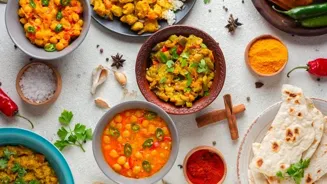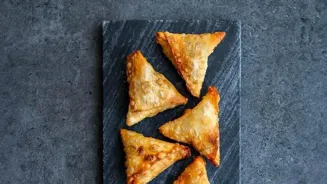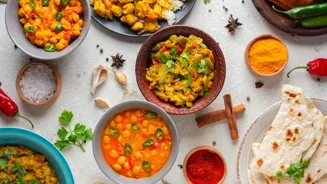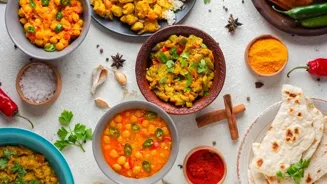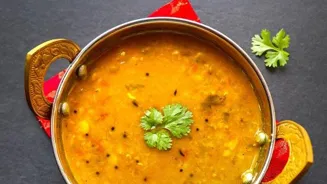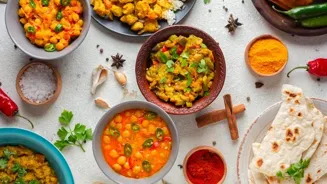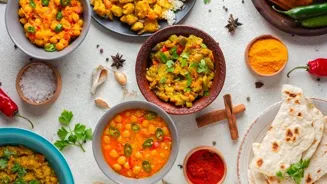Unraveling India's Culinary Mysteries: Exploring the Origins of Iconic Dishes. Dive into the stories behind India's favorite flavors!
India, a land of vibrant colours, diverse cultures, and of course, incredibly
delicious food! Every region boasts its unique culinary traditions, using local spices and ingredients to create dishes that are nothing short of masterpieces.
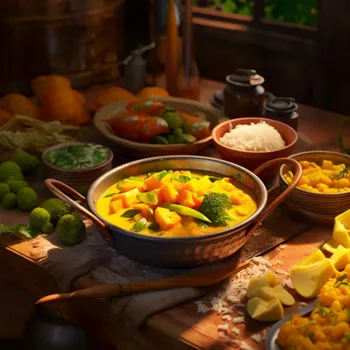
But have you ever wondered about the stories behind those dishes that made India so famous? Let’s embark on a flavorful journey to uncover the fascinating origins of some of India's most beloved vegetarian delights.
Khichdi: Ancient comfort food loved by all in India
One such gem is the simple yet satisfying 'Khichdi'. Often hailed as the ultimate comfort food, Khichdi finds its roots in ancient India. Mentioned in historical texts of the Mughal era, it was a staple loved by both the elite and the common folk.
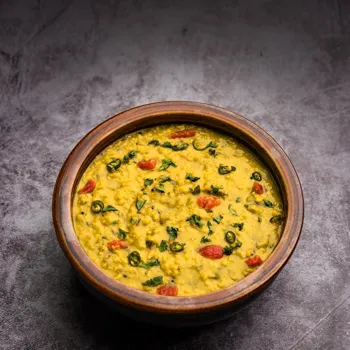
This humble dish of rice and lentils, cooked together with mild spices, was not just a meal, it was considered a complete, nourishing food, easily digestible and suitable for all ages.
The beauty of Khichdi lies in its adaptability; every household has its own unique recipe, passed down through generations. Some add seasonal vegetables. Others enhance it with a dollop of ghee (clarified butter) for added richness.
It represents simplicity, unity (of ingredients), and the spirit of Indian home cooking.
Samosas: Indian snack with global roots, a tale of adaptation and innovation
Moving from simplicity to something a little more festive, let's talk about 'Samosas'. These triangular, deep-fried parcels of potato and pea goodness are a quintessential Indian snack. While the modern samosa has become synonymous with Indian cuisine, its origins are not entirely Indian.
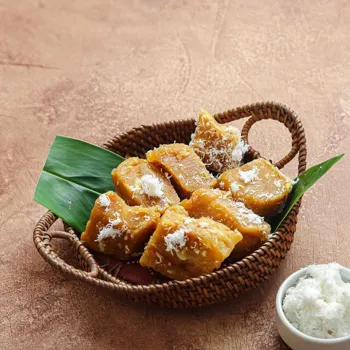
It is believed that samosas came to India through the Silk Road, with roots in the Middle East. The 'sambusak', as it was known then, was a savory pastry filled with meat. When it arrived in India, it underwent a transformation.
Vegetarian versions became immensely popular, particularly the potato-filled samosa, which is now a staple street food across the country. The samosa’s journey reflects India's incredible ability to adapt and embrace outside influences, creating something entirely new and uniquely its own.
A beloved South Indian dish, the Masala Dosa is a crispy crepe filled with spiced potato, served with sambar and chutney
A comforting favourite, the 'Masala Dosa' holds a special place in the hearts of many. Originating from the Udupi region of Karnataka, this crispy, golden crepe made from fermented rice and lentil batter is a South Indian breakfast staple that has captured hearts nationwide.
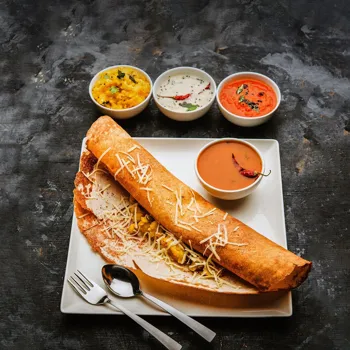
The Masala Dosa is said to have originated as a way to make use of leftover batter and potato filling. The potato masala, spiced with mustard seeds, curry leaves, and onions, is spread inside the dosa. It is served with sambar (lentil-based vegetable stew) and coconut chutney.
Its unique blend of textures and flavours, from the crispiness of the dosa to the savoury and mildly tangy filling, makes it a delightful culinary experience.
Exploring the diverse and delectable 'Chaat family' of Indian street food culture
Let's explore the tangy and sweet 'Chaat family'. Chaat encompasses a wide array of savoury snacks, each more tempting than the last.
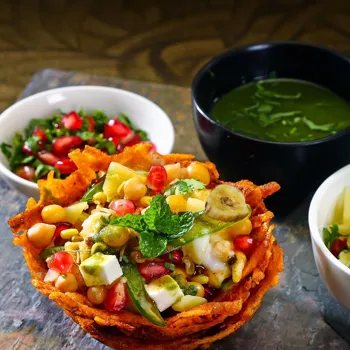
From the crunchy 'Pani Puri' filled with spicy water and potatoes to the layered 'Sev Puri' topped with chutneys and sev(thin fried noodles made from besan flour), chaat is an explosion of flavours and textures. The origins of chaat can be traced back to North India, possibly during the Mughal era.
It is believed that chaat evolved as a way to transform simple ingredients into something exciting and flavorful. Over time, different regions added their own unique twists to chaat, resulting in the diverse and delectable range of chaat we enjoy today.
Chaat is not just a snack, it's an experience - a celebration of Indian street food culture.
Rajma Chawal: a beloved North Indian dish with surprising history
Rajma Chawal', a hearty and comforting combination of kidney bean curry and rice. This dish has a surprising history.
Though kidney beans are not originally from India, they were introduced to the region, most probably from Central Asia, and have since become an integral part of North Indian cuisine. The creamy, flavourful rajma curry, slow-cooked with aromatic spices, pairs perfectly with steamed rice.
Rajma Chawal is particularly loved in the northern states such as Punjab and Himachal Pradesh. It showcases India's ability to adopt and adapt foreign ingredients, transforming them into beloved local dishes.
Indulge in Kulfi, a rich, dense Indian dessert with Persian roots
Moving onto something sweet, let's indulge in the rich and creamy 'Kulfi'. Often described as Indian ice cream, Kulfi is believed to have originated during the Mughal period. The word "Kulfi" itself comes from the Persian word 'Qulfi', meaning 'covered cup'.
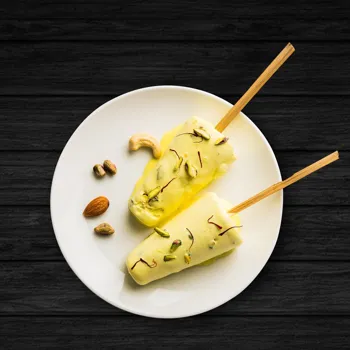
Unlike ice cream, Kulfi is not whipped, resulting in a denser and creamier texture. Traditionally, it’s made by slowly evaporating milk over low heat, adding sugar and spices, and freezing it in small earthen pots or metal cones.
The slow cooking process gives Kulfi its distinctive caramelized flavour. It is often flavoured with cardamom, saffron, pistachio, and mango. Kulfi is a delicious reminder of India's rich culinary heritage and its historical connections to Persia and Central Asia.
AI Generated Content. Glance/InMobi shall have no liability for the content
